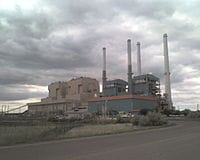By Region
Rocky II: What are we doing to our salmon?
“Everything we’re doing to replace vanishing salmon might be killing them off faster” In this installment in his series of the challenge of restoring fish populations in the Columbia and Snake Rivers, Idaho Statesman reporter, Rocky Barker, explores the many ways in which the US Army Corps of Engineers has tried to bring salmon back.…
Without the dams would salmon populations recover?
“Remove 4 dams, leave these fish alone, and they may be able to replenish themselves” Idaho Statesman reporter, Rocky Barker, continues his series on the question of how salmon and steelhead populations can be restored and the energy generation, economic, cultural, and agricultural implications of various proposed solutions, including the removal of the four lower…
Idaho: New financing option available for solar and energy efficiency
The NW Energy Coalition is partnering with Puget Sound Cooperative Credit Union (PSCCU) to expand solar financing in the Northwest. Since 1934, PSCCU has been empowering members to do more than they thought they could with their banking relationship. The credit union maintains a strong commitment to its social, economic and environmental convictions and…
NW Energy Coalition lauded for climate action
Elisheva Mittelman and Kevin Steinberger of the National Resources Defense Council are publishing a series of blog posts that describe how states and regions are rushing to fill the climate action vacuum left in the wake of the Trump administration’s abandonment of the Paris Agreement and a bevy of Obama-era environmental measures. Their August 30 post titled,…
A decade under Initiative 937 yields new jobs, new industries, and affordable electricity
Good energy and environmental policy is also good economic policy. That’s the message of a new video collection produced by the American Wind Energy Association (AWEA), Renewable Northwest, and the NW Energy Coalition. The lead five-minute video explores how Washington’s clean energy landscape has blossomed since Initiative 937 was enacted in 2007. With sections devoted…
Energy Efficiency leads the way in carbon emission reductions
In 2005, annual emissions of CO2 in the US reached an all-time high of just under six billion tons. By 2016, emissions had declined by 14% from that peak and by 18% when adjusted for growth in population and economic activity. How have we done it? Zeke Hausfather provides a detailed look…
Montana organizations unite to oppose Trump administration budget cuts and policies
On Tuesday, NW Energy Coalition policy analyst, Diego Rivas, joined representatives from the Montana Wildlife Federation and the Montana Farmers Union as well as Helena City Commissioner Andres Halladay to publicize federal government policies and proposed budget cuts that threaten Montana’s economy and communities. The event was part of a three-city tour to draw attention…
BPA reduces Montana Intertie rate, but more action is needed
NW Energy Coalition welcomes BPA recognition of barriers to development of renewable energy in Montana SEATTLE, Washington — Yesterday the Bonneville Power Administration announced that its 2018-19 rates will include a fifteen percent reduction in the Montana Intertie rate – a $2 per MWh charge that applies to a 90-mile section of power lines between…











